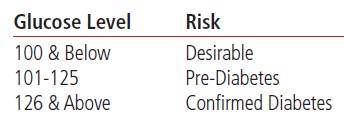Diabetes is a disease that affects 38.4 million Americans of all ages and backgrounds. It’s a chronic health condition that affects how your body manages blood sugar levels. About 1 in 5 people experiencing diabetes are completely unaware they have the condition. Additionally, 98 million American adults – more than 1 in 3 – are living with prediabetes, making diabetes one of the most common chronic diseases in the country. Diabetes puts you at higher risk of serious health complications, including blindness, kidney failure, heart disease, stroke, and loss of toes, feet, or even legs. Luckily when diabetes is properly managed your risk of complications decreases.
Types of diabetes
There are three main types of diabetes: type 1, type 2 and gestational.
- Type 1 diabetes accounts for 5-10% of all diabetes diagnoses and is an autoimmune response that happens when the pancreas stops making enough insulin to help regulate blood sugar in the body. Although it’s often diagnosed at an early age, type 1 diabetes can develop at any age.
- Type 2 diabetes is the most common – accounting for 90-95% of all diabetes diagnoses – and occurs due to the body’s inability to properly regulate insulin. While type 2 diabetes can develop for many reasons, unlike type 1, there are ways to prevent a type 2 diagnosis.
- Gestational diabetes is a type of diabetes that can develop during pregnancy, typically affecting women who haven’t previously been diagnosed with diabetes. This type of diabetes is often diagnosed from a blood test around 28 weeks into pregnancy and typically goes away after a woman gives birth.
While there is currently no cure for diabetes, there are steps you can take to reduce your risks or manage your symptoms, including diet, exercise and lifestyle changes.
Making diet changes doesn’t have to be complicated
How we eat is crucial to managing and preventing diabetes. If you have been diagnosed with diabetes or pre-diabetes your doctor may help you create a diet plan or may recommend you meet with a dietitian to create a plan.
It’s important to eat a well-balanced diet full of healthy fats, lean proteins and non-starchy vegetables. The American Diabetes Association offers a simple way to put together a healthy meal called the “Diabetes Plate.” This method has four simple steps:
- Fill half your plate with non-starchy vegetables like broccoli, asparagus, carrots and others.
- Fill one quarter with lean proteins such as lean beef, chicken or fish.
- Fill the last quarter of your plate with a carbohydrate like beans, potatoes or whole grain rice.
- Lastly choose a low-calorie drink (preferably water). If you need more flavor, you could also drink unsweetened tea, sparkling water or infused waters.
Understanding blood sugar levels

Diabetes is a major contributor to heart disease risk. Understanding your blood sugar levels, also known as glucose, can help you better understand your heart and overall health. Cells use glucose as a primary source of energy. When blood sugar levels are high, especially in individuals living with diabetes, it can increase your risk of heart disease. Blood sugar can be monitored through blood tests. This is especially important for those at risk of developing diabetes.
At your annual physical, your doctor will explain your test results but it’s always helpful to keep general ranges in mind (see above).
Physical fitness
Regular exercise is a powerful part of managing and preventing diabetes. If you’re not used to exercising this can seem intimidating. But remember, ease into a routine that’s not too overwhelming or strenuous. Jumping into a difficult routine can quickly become discouraging and lead to burn out. Starting small with a realistic goal will help keep you consistent and successful. Going on a light walk or trying a fitness class with a friend is a great first step to living an active lifestyle. If you’re feeling discouraged, it’s important to remember even small changes and new habits can make a big impact on your overall health.
Talk to your doctor
Patients living with diabetes or pre-diabetes are at a greater risk of developing other health conditions that can affect the heart, kidneys, nerves and blood vessels. That’s why it’s important to speak to a doctor about your risk of diabetes and how to monitor blood sugar levels.

Find a primary care provider now
Don’t have a primary care physician? Establish with a Saint Agnes Care provider and take control of your health.
Schedule Today
